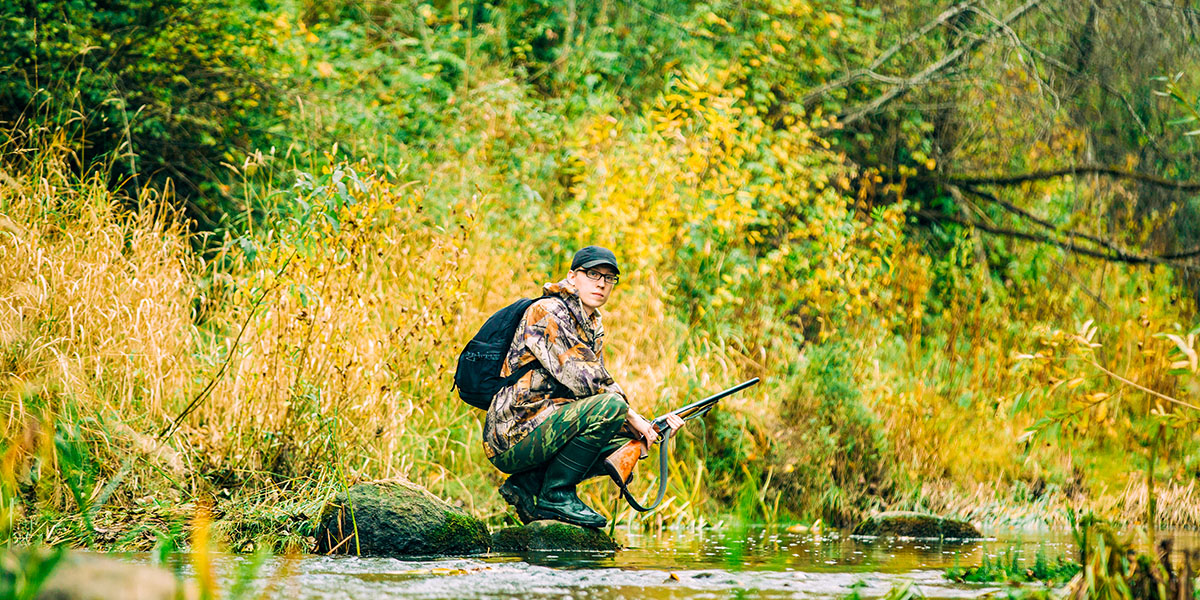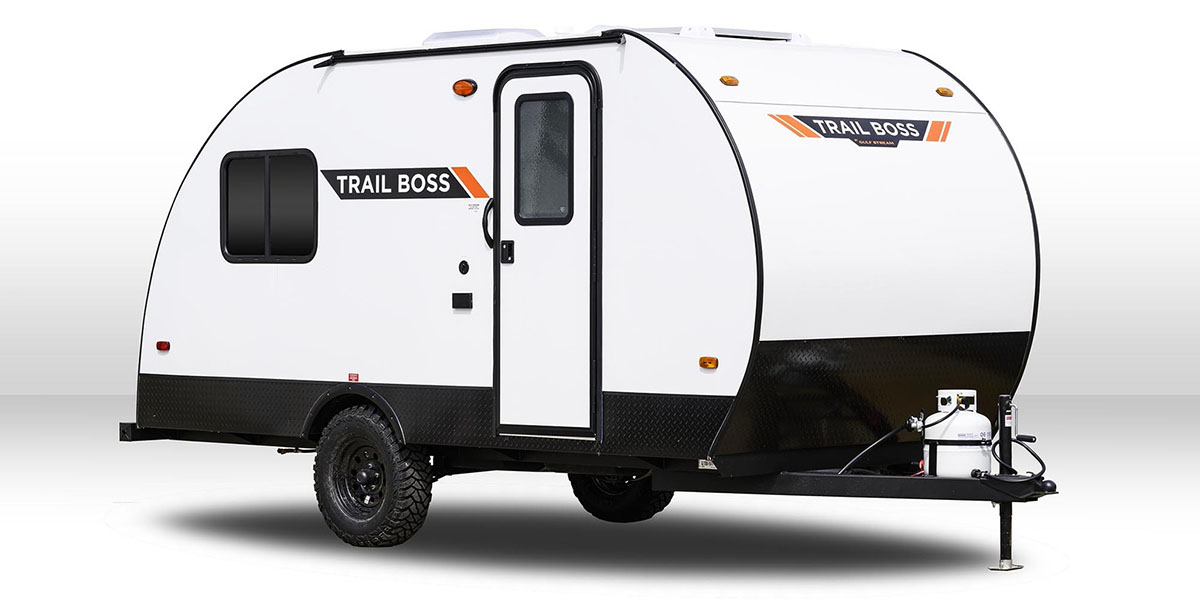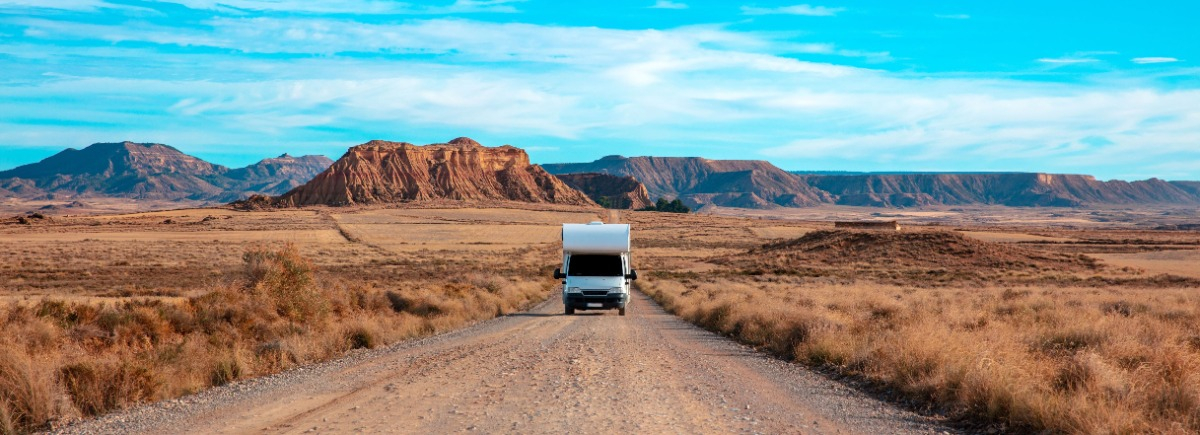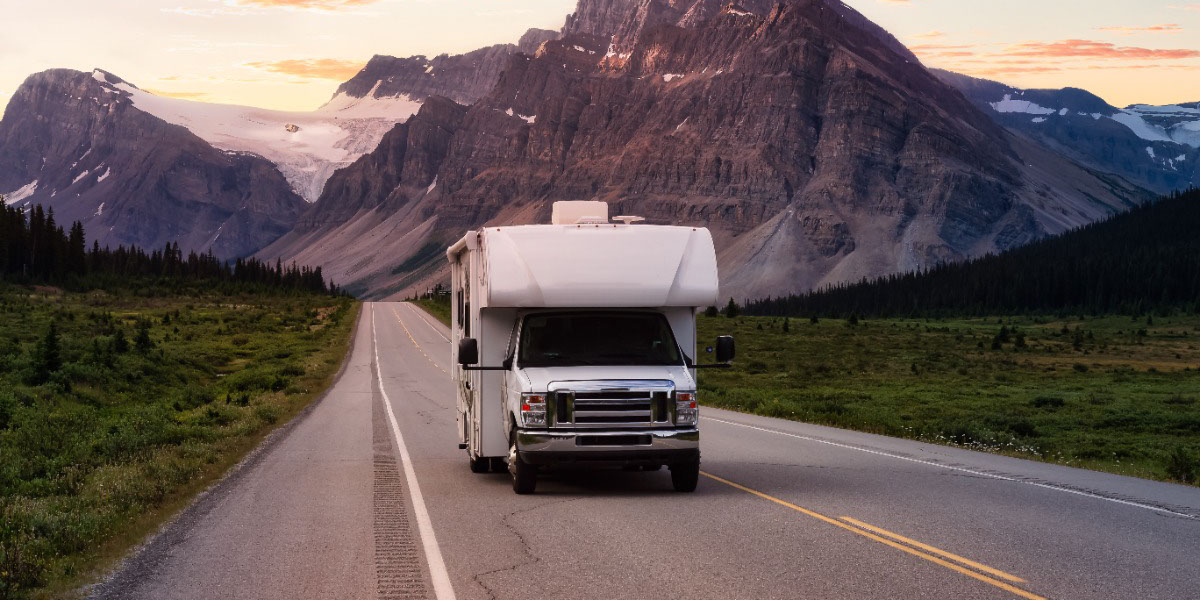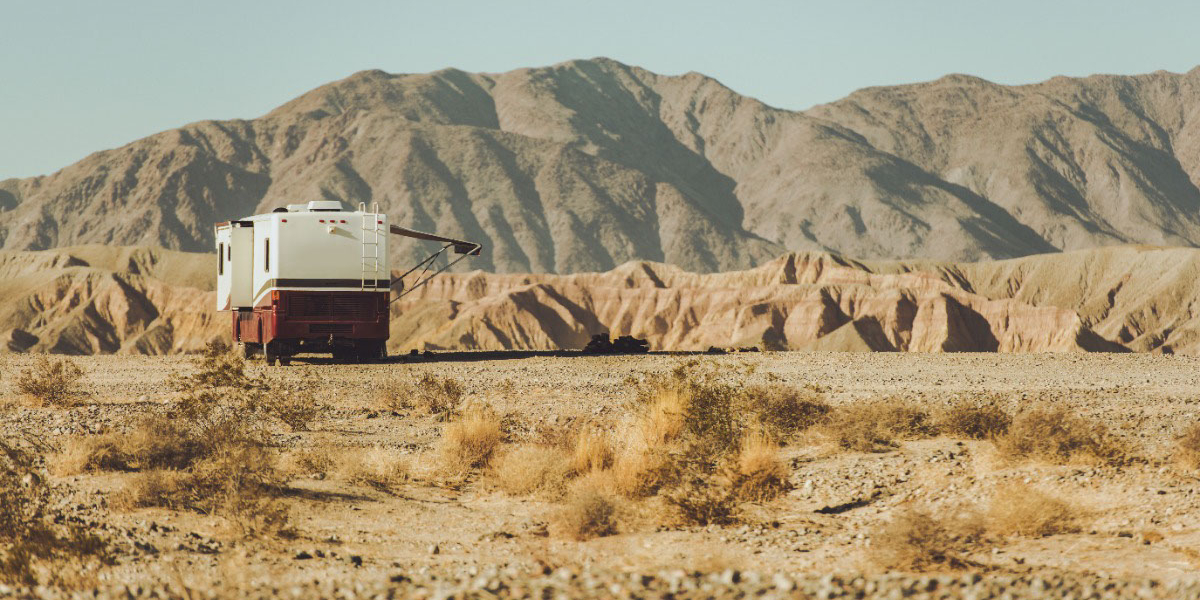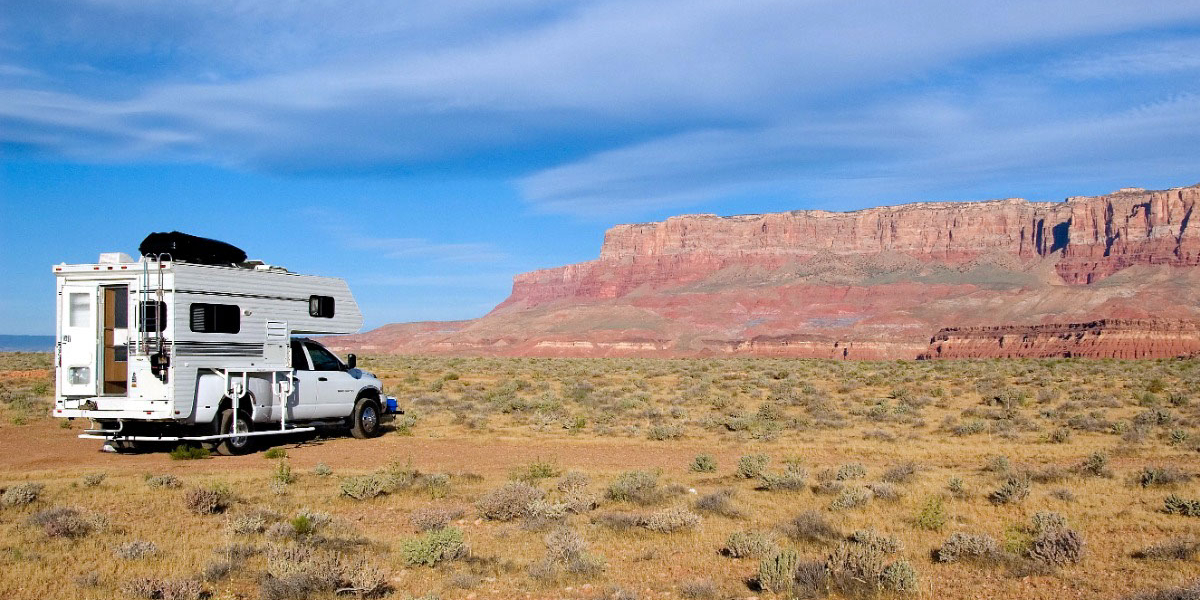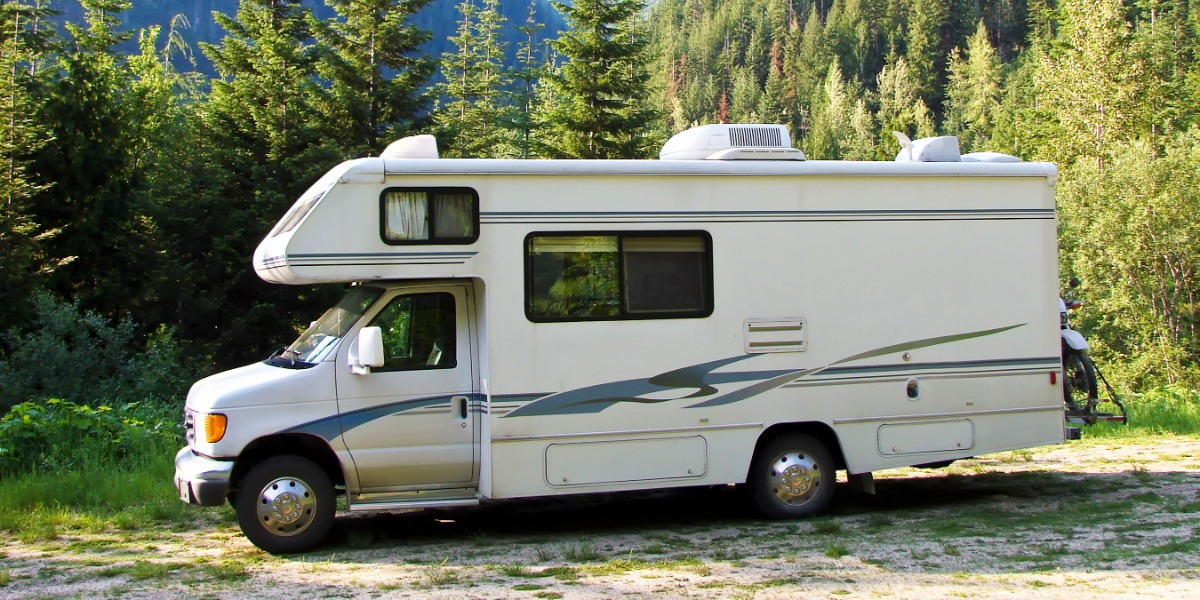Using your RV as a base camp while you hunt just makes a lot of sense. It extends your ability to stay out in the wild, whether you’re spending your days in the stand, blind, or out tracking a trail. It’s a no brainer. The really question for a lot of hunter is more simply: What are the top RVs for hunting season? (And what kind of things are RV companies doing that make RVs better for spending time in the great outdoors?)
So, we went on an information hunt of our own. And here are a few essential things we considered that a good hunting rig should have to have these three things:
- Credible boondocking capability. Because you will likely spend time in the wild as part of the adventure — and that probably won’t include hook-ups.
- Flexible sleeping arrangements. Because hunting trips, more often than not, are friend trips not couple trips. (Hats off to you if you’re the exception.)
- Off-road functionality. Because sometimes the best game happens lies far from the hardball.
With those criteria in mind, let’s take a look at the best RVs for hunting season – from mild to wild. And yes, some of them are real trophies.
Ember RV Overland 240TKR
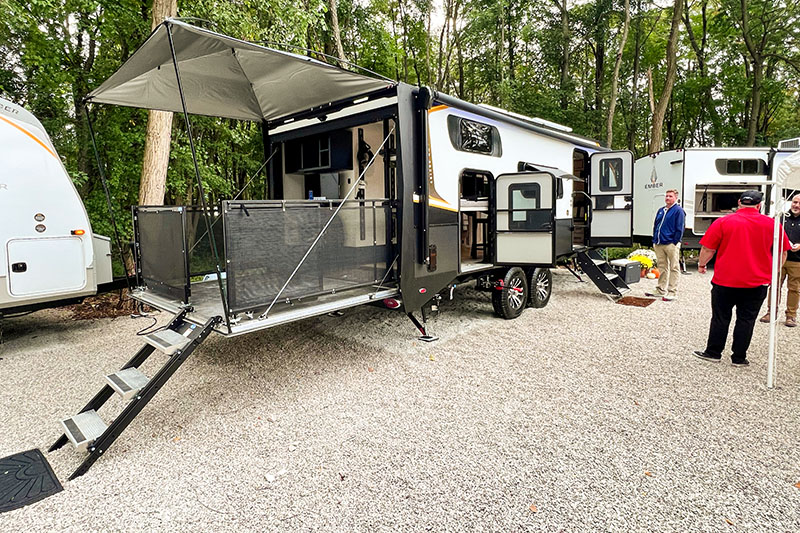
The first time I saw the Ember RV 240TKR I knew that the decision makers at Ember RV had outdoorsmen in mind. This model has the most unique bed situation in the front. It’s a Murphy bed but with a big difference. The bed itself is actually two parts, each of those being a twin-sized bed. You can push the beds apart and there’s a hanging closet that can slide between them allowing for two friends to have their own bed. If you do bring your significant other along, the beds can push together and form a large single bed. It’s pretty slick.
But that’s not the only magic in this travel trailer. It also features a rear cargo area that uses E-Track rails so there is a lot that can happen here as well. Included in the trailer are platforms so you could make two double-over-double bunks — certainly capable of sleeping adults. Since the platforms rest on the E-Track, which Ember calls EmberTrack, you can leave one at home to increase cargo space or even hang things like hammocks, drawers and cases for hunting supplies. There’s also a drop-down door in the back, similar to a toy hauler, that turns into a patio.
And, the Ember Overland series uses the Curt independent suspension which is one of the better set-ups for towing and off-roading. This might be one of the better RVs out there for hunting.
MSRP: $74,935 • Length: 28 feet 3 inches • Height: 10 feet 11 inches • Dry Weight: 6,765 pounds
Palomino Pause
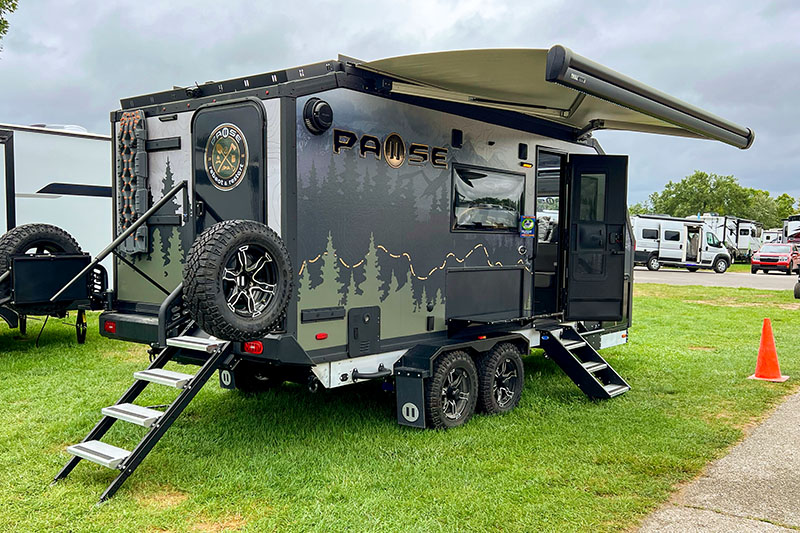
Like the Ember RV model, the Palomino Pause features a rugged build with an exceptional independent suspension. But the Palomino offering goes one step further with an air ride suspension that allows you to raise and lower the RV. There are a number of models in the Pause line, but they all feature a rugged huck-bolted frame and a mud room in the back. (The perfect place to keep hunting supplies and clothing without bringing them into the main space of the trailer.)
Looking at the Pause 20.3 there is a full outdoor kitchen with a 12-volt cooler and propane flat-top griddle. Something unusual about this model is that the interior walls are 3D-printed and all the cabinets and drawers and interior pieces are human-made pieces so they’re far more resistant to damage from water.
The limitation on this model, though, is that there’s only one bed in here at the front. So, while it may be one of the top RVs for hunting season, it’s more specifically suited for hunting alone.
MSRP: $78,997+ • Length: 19 feet 11 inches to 25 feet 10 inches • Height: 10 feet 9 inches • Dry Weight: 5,773 to 7,909 pounds
Outdoors RV Backcountry Series 20BD
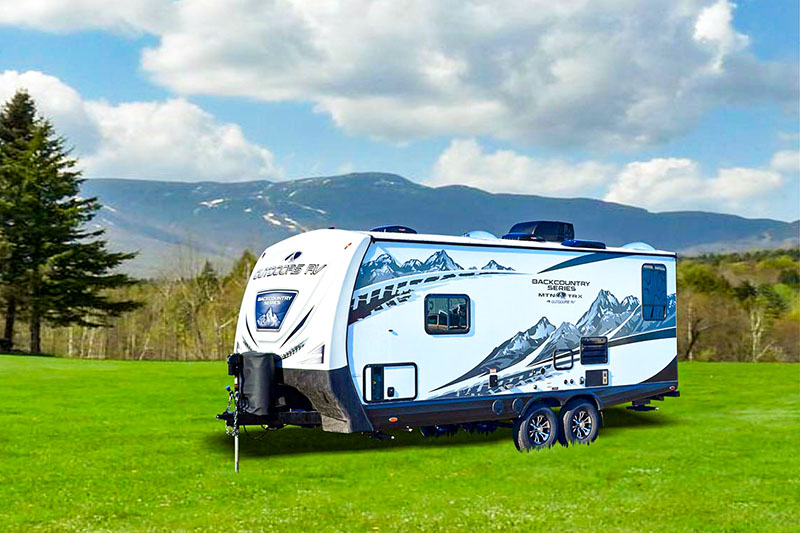
If you’re not on the West Coast you may not have heard of Outdoors RV, but they’re a company that specializes in towable RVs that are extraordinarily rugged and well-suited to camping even in very cold weather. In fact, Outdoors RV’s trailers are some of the better rigs for camping in the cold.
But something unusual is that the company builds their own chassis and certifies those for off-road use. The company makes a variety of models from travel trailers to toy haulers. The Backcountry 20BD is the smallest rig they make in this series. Still, this has a dinette in the back that can convert to a 40-inch-by-84-inch bed and a proper queen-size bed at the front. To reflect their outdoors credibility there’s even a gun safe by the bed.
This is also one of the few travel trailers you can find with a built-in generator for serious off-grid capability. These also have good sized holding tanks since the company’s chassis are able to support the weight of plenty of water.
MSRP: $67,505 • Length: 25 feet 3 inches • Height: 11 feet 7 inches • Dry Weight: 6,155 pounds
Winnebago EKKO
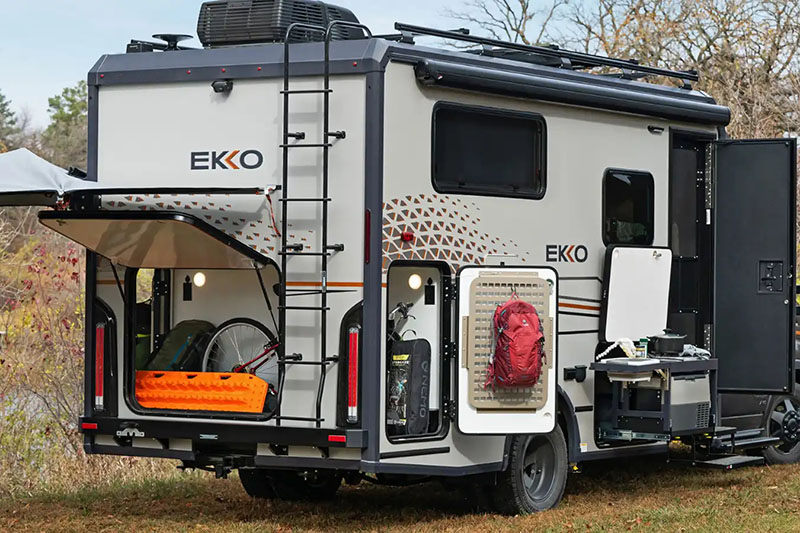
The Winnebago Ekko is an evolutionary rig in some ways being essentially a Class B Plus, which translates into a van/cutaway front and a motorhome back end but without a sleeping area over the cab. (Got all that?) The Ekko is just a few inches wider than the Ford Transit body on which it is based so it retains much of the drivability of a Class B, which is one of the strong suits of this genre.
By adding a big square box to the back that minor addition of width translates into a whole different experience for the camping side of the vehicle. And I have to say that Winnebago has taken every advantage of this body as well.
This rig was very intentionally created to deliver four-season camping as much as possible. The walls of the motorhome section are two inches thick, and the roof is three inches thick. The entry door very specifically does not have a window so it can be better insulated.There is a thick blanket that Winnebago makes in house that separates the cab from the camper portion if you’re really in cold temperatures. All the tanks and plumbing are within the cabin of the camper and even the wet bay is heated. Of course, those tanks have 12-volt heating pads on them.
Even More to Like About the EKKO
What I like about this RV is the twin beds in the back that can be converted to a king-sized bed which increases flexibility. These beds are also on a raised platform of sorts which leaves a very substantial rear cargo area. This cargo bay is lined with panels to which you can attach things to hold whatever you like – from outdoors gear to tools.
There are now two variants on the EKKO – one of which is on the Ford Transit all-wheel-drive platform and the other on the Mercedes-Benz Sprinter all-wheel-drive. There is also a pop top model now available if you really want to increase the sleeping space in here.
EKKO Transit 22A – MSRP: $215,551 • Length: 23 feet • Height: 10 feet 6 inches • GVWR: 11,000 pounds
EKKO Sprinter 23B – MSRP: $245,152 • Length: 24 feet 6 inches • Height: 10 feet 11 inches • GVWR: 11,030 pounds
Thor Motor Coach Tranquility 24A
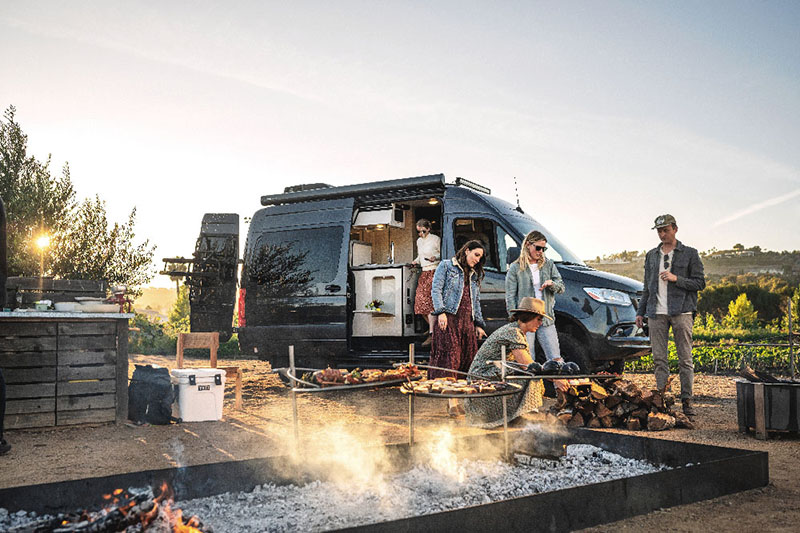
If you’re looking for a Class B camper that has some off-road credibility and the ability to sleep two friends, the Thor Tranquility 24A is worth a gander. Based on the Mercedes-Benz Sprinter all-wheel-drive Thor steps up the appearance with high-performance lighting and several other exterior details that make this perform and look the part of an off-road machine.
Something I like about the way Thor does their B vans is with the Mastervolt power system. Using the alternator in the engine this marine-grade power system allows you to operate the entire camping portion of the RV on battery power so you can stealthily enjoy the woods without hearing the noise of a generator.
I also like that the bathroom spans the width of the back of this rig so it’s more spacious than in many other Class B RVs.
MSRP: $216,860 • Length: 24 feet 4 inches • Height: 10 feet 6 inches • GVWR: 11,030 pounds
Pickup Campers
For a lot of hunters there’s nothing better than a pickup camper. You can outfit a pickup you like ,whether that’s a stylish city cruiser or a serious off-road challenger. As such, it can make a lot of sense to put a camper on the back of a pickup. Another big plus on pickup campers is that you can still tow. So. if your outdoor adventure incudes fishing, you can bring along your boat, for example. Here are a couple of campers we’ve seen recently that are among the best RVs for hunting season.
Four Wheel Campers Project M
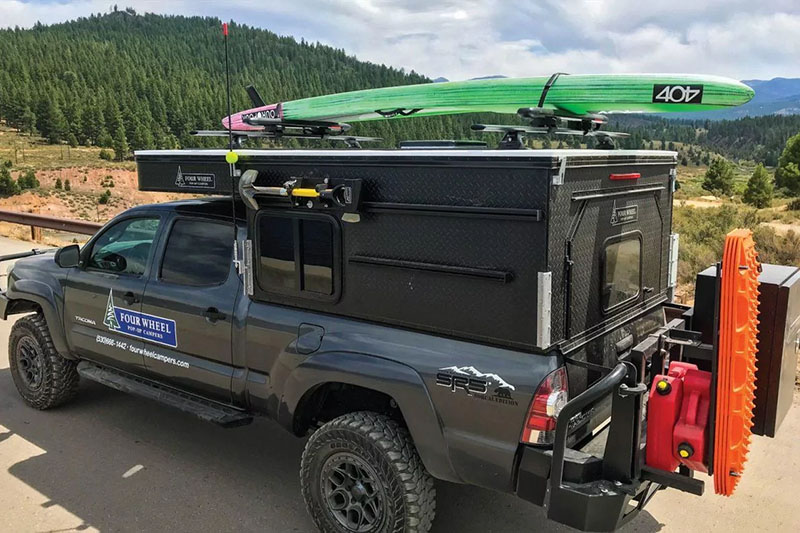
Four Wheel Campers offers campers for just about any pickup configuration out there. One of the unique things about these all-aluminum campers is that the roof easily pops up and down. So, you have a lower height when traveling but then good ceiling height when camping.
The company makes these for full-sized trucks, of course, but they have models compatible with mid-sized trucks, including the Jeep Gladiator pickup. The company makes a wide variety of camper configurations and works with customers to tailor a rig to your style of camping with a wide number of choices of interior pieces and design. This is an old school way of doing things that still makes sense.
But another option they have is their Project M. This is essentially a blank slate where you can outfit the camper how you deem fit. That means you can use the camper during the week as an office or just to haul supplies and on the weekend as a camper. There are a lot of choices of windows and other pieces in these but they are affordable and still have the over-cab bunk Four Wheel Pop-Up Campers is known for.
MSRP: $11,895 • Length: Sized to fit specific truck and bed length • Height: 3 feet 7 inches to 3 feet 9 inches down; 5 feet 4 inches to 5 feet 6 inches popped up • Base Weight: 352–465 pounds
Lance 650 Truck Camper
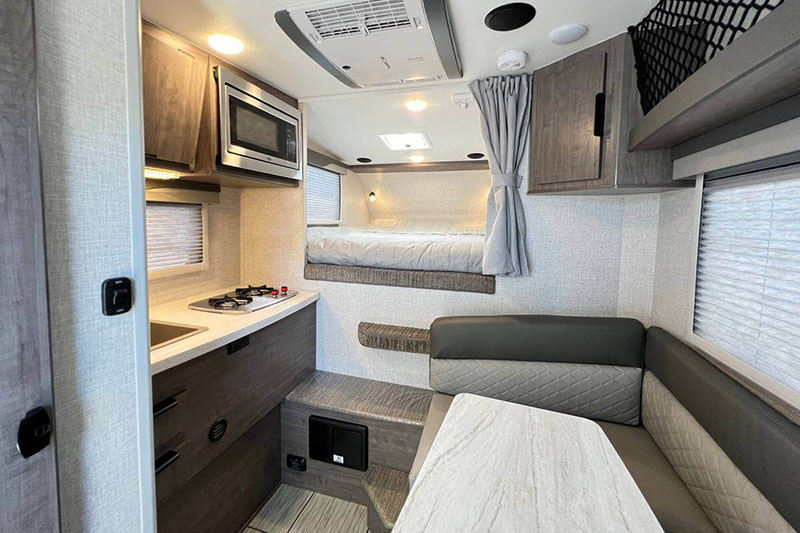
Lance Camper has been a benchmark for many decades in the pickup camper world. The company also makes high-quality travel trailers and has even introduced the new Enduro line of serious off-grid trailers. But pickup campers are still a hallmark of the Lance brand.
As such, these high-quality campers slot into the back of your truck. And they still offer many of the same creature comforts of a travel trailer. We took a look at Lance’s smallest pickup camper, the 650 Truck Camper, since it can be fitted to a short-bed pickup which many of us have. Yet these still have holding tanks and air conditioning, a water heater and dry bath. It’s a lot packed into the space. Of course, this has the over-cab bunk but there’s also a dinette in here that folds down into a bed.
MSRP: $42,696 • Length: 15 feet 6 inches Height: 8 feet 1 inch (with A/C unit) • Dry Weight: 1,813 pounds
So You’re Hunting RVs for Hunting Season?
When you’re embarking on a hunting trip deep in the woods (and need a reliable base camp for your adventures), the right RV can make all the difference. Features like independent suspension, off-grid power systems, and flexible cargo areas ensure that you can focus on your outdoor experience. All without sacrificing comfort or convenience. Each feature deserves special consideration when you’re considering not just the best RVs for hunting season, but also the right RV for the way you hunt.
No matter which model you choose, these RVs provide the durability and flexibility needed for an unforgettable hunting season in the wild. Ultimately, the best RVs for hunting season are the one that match your personal style of adventure.
